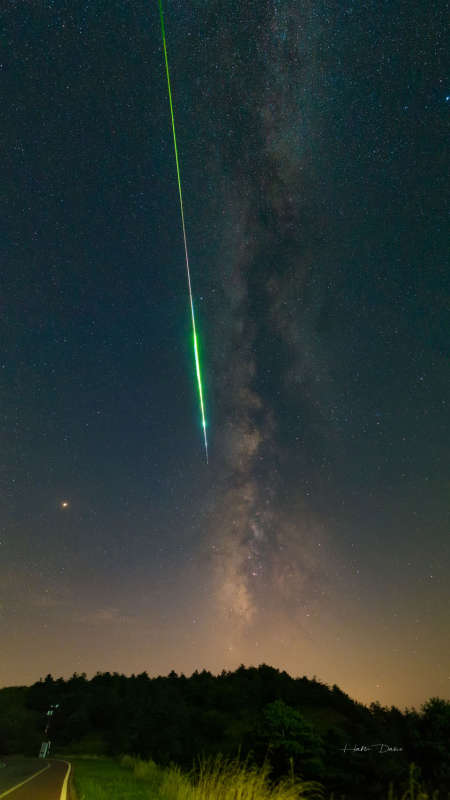Credit & Copyright: Dandan Huang
Explanation:
It was bright and green and flashed as it moved quickly along the Milky Way.
It left
a trail that took 30 minutes to dissipate.
Given the day, August 12, and the direction, away
from Perseus,
it was likely a small bit from the nucleus of
Comet Swift-Tuttle plowing through the
Earth's atmosphere -- and therefore part of the annual
Perseids meteor shower.
The astrophotographer captured the fireball
as it shot across the sky in 2018 above a valley in
Yichang, Hubei,
China.
The meteor's streak, also caught
on video,
ended near the
direction of Mars on the lower left.
Next week, the 2021 Perseids meteor shower will peak again.
This year
the Moon will set shortly after
the Sun, leaving a night sky ideal for seeing
lots
of Perseids from dark and clear locations across
planet Earth.
Follow APOD in English on:
Facebook,
Instagram, or
Twitter
1999 2000 2001 2002 2003 2004 2005 2006 2007 2008 2009 2010 2011 2012 2013 2014 2015 2016 2017 2018 2019 2020 2021 2022 2023 2024 2025 |
Yanvar' Fevral' Mart Aprel' Mai Iyun' Iyul' Avgust Sentyabr' Oktyabr' Noyabr' Dekabr' |
NASA Web Site Statements, Warnings, and Disclaimers
NASA Official: Jay Norris. Specific rights apply.
A service of: LHEA at NASA / GSFC
& Michigan Tech. U.
|
Publikacii s klyuchevymi slovami:
Perseids - Perseidy
Publikacii so slovami: Perseids - Perseidy | |
Sm. takzhe:
Vse publikacii na tu zhe temu >> | |
